Training textile-garment student with full of digital skills and green skills
University students are a high-quality workforce for businesses in the future. Therefore, equipping students with the knowledge, skills, and qualities that meet the demands of businesses is not only crucial but also the responsibility of universities. In the current context, when businesses are rapidly enhancing their competitiveness through digital transformation and green transition solutions, training programs must also be adjusted and updated to ensure students acquire sufficient digital and green skills to fulfill the tasks assigned by businesses.
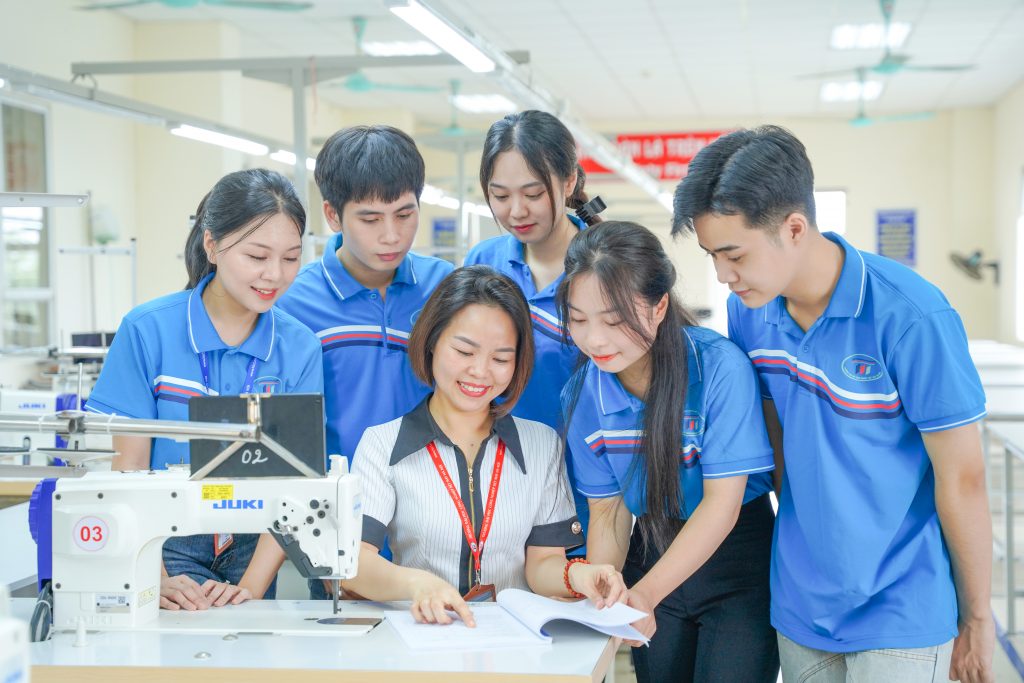
In reality, textile garment enterprises are actively investing in digital technology across the entire supply chain to enhance productivity and product quality to maintain their competitiveness. On the other hand, to grasp green consumption trends in major markets such as Europe and the US, these enterprises are gradually transitioning from “brown” production to “green” production. Therefore, improving the quality of graduates to meet the digital and green transformation requirements of textile garment enterprises is essential, and this is the main focus of this study.
Keywords: digital skills, green skills, digital transformation, green transformation, university students.
Demand for Digital and Green Skills for Textile Garment Students
Demand for Digital Skills for University Graduates
According to many experts, the impact of digital technology will lead to the loss of about 50% of current jobs while creating 50% of new jobs. The competencies needed for these new jobs require the textile garment workforce to have digital skills to meet the high demands of these roles. Specifically, the digital skills required for different subjects are as follows:
- For students working in the industrial sewing sector:
- Smart production preparation skills: creating fixtures for programming machines; designing sewing lines using digital technology and artificial intelligence; designing patterns with 3D technology.
- Smart quality control skills.
- Skills for operating cell-based sewing lines with digital technology.
- For students specializing in textile garment equipment maintenance:
- Repair skills and Predictive maintenance using digital technology.
- Skills for interdisciplinary thinking in mechatronics for textile garment equipment.
- For students in the fiber and weaving sectors:
- Skills for managing virtual systems on each device and connecting the entire factory.
- Skills in using RFID technology and sensors to collect, store, and process information about equipment, machine status, performance, or other maintenance information.
- Skills for sharing information across the network from raw materials, semi-finished products, and final products to data analysis results and error forecasting.
- Skills for operating automated spinning mills from cotton tearing to packaging.
- Skills in using high-tech digital equipment in fiber testing: USTER 6, KBS.
- Skills in exploiting 3D weaving systems.
- Skills in utilizing 3D printing technology.
- Skills for developing new materials with electrical conductivity, luminescence, or Internet connectivity.
- For students in the dyeing sector:
- Skills in leveraging big data systems to determine new dyeing formulas, helping to increase first-time dyeing accuracy.
- Skills in using artificial intelligence to forecast dye color suitability and manage dyeing process errors.
- For management professionals:
- Developing strategies (business, investment) with artificial intelligence tools such as DSS, ESS, CRM, SCM, MES, PLM, and ERP.
- Implementing digital marketing, with internet marketing being a popular tool currently.
- Data analysis in big data and cloud computing environments.
- Leading teams through digitized information systems.
- Managing digitized production lines.
- Ensuring quality through automated software systems using digital technology.
- Optimizing production processes with integrated equipment and central data.
- Foreign language skills and communication in a digital environment.
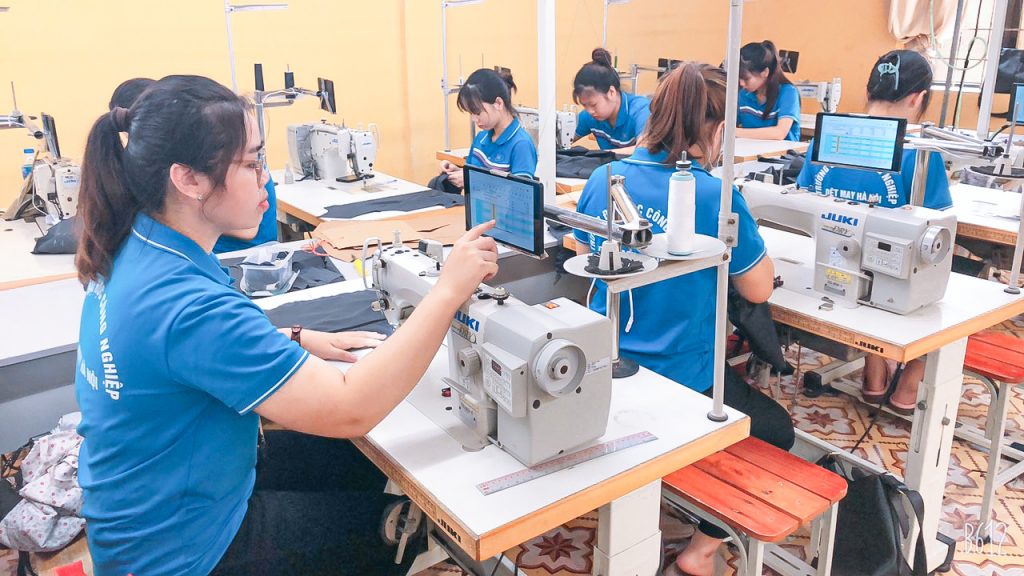
Demand for Green Skills for University Graduates
Vietnamese textile garment enterprises need to meet new green transformation requirements from major markets for sustainable development, university graduates in the textile garment sector must possess sufficient green skills to implement these requirements in companies. Specifically:
- Green Design Skills:
- Eco-design skills for sustainable products: using sustainable, environmentally friendly materials, high recycling rates for products and packaging, to meet EPR requirements.
- Green factory design skills: choosing technologies to reduce carbon emissions, lower energy consumption, and use renewable energy; reducing Scope 3 carbon emissions to meet CBAM and CSRD requirements.
- Green supply chain design skills: utilizing local suppliers to reduce Scope 3 emissions, using international suppliers that meet green standards.
- Green Production Organization Skills:
- Measuring carbon emissions produced during the manufacturing process.
- Optimizing production processes to reduce carbon emissions, such as reducing material waste, lowering energy consumption, reducing defect rates, using renewable energy, organizing environmentally friendly production (wastewater and other waste treatment), and optimizing emission management.
- Collecting, classifying, and handling waste in textile production.
- Creating digital product passports: traceability, origin certification.
- Assessing the cost risks associated with transitioning to green production, including carbon emissions taxes.
- Preparing sustainability reports (ESG reports covering environmental, social, and governance aspects).
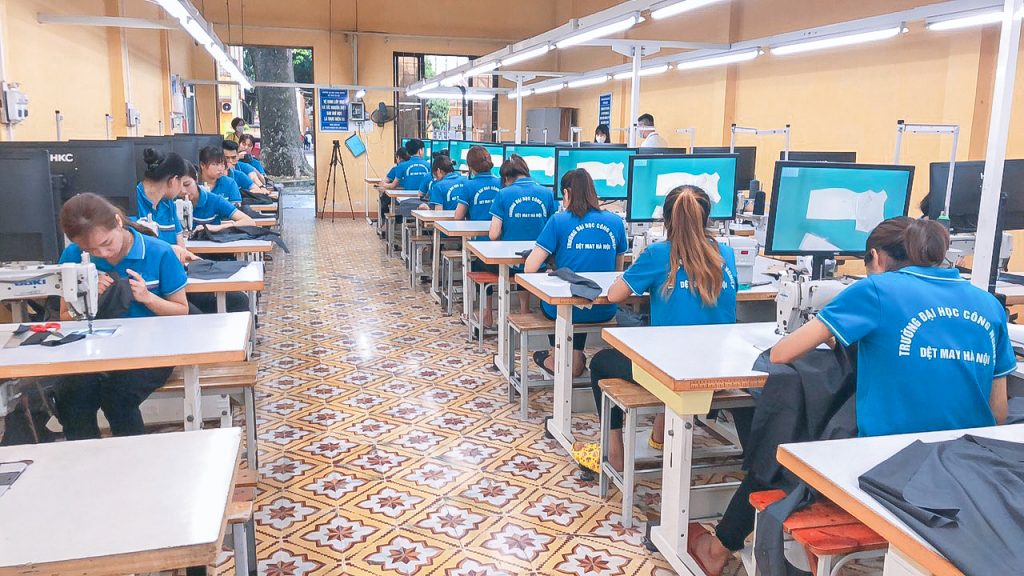
According to Deloitte’s 2022 assessment, green skills related to addressing the following three issues should be prioritized:
- Using more sustainable materials (e.g., recycled materials, products with lower emissions).
- Increasing energy efficiency (e.g., energy performance in factories).
- Using environmentally friendly or fuel-efficient machinery, technology, and equipment.
In 2020, the United Nations Industrial Development Organization (UNIDO) recommended green skills needed for green jobs based on the complexity of green technologies used and the pace of market development. Specific data is shown in Figure 1.
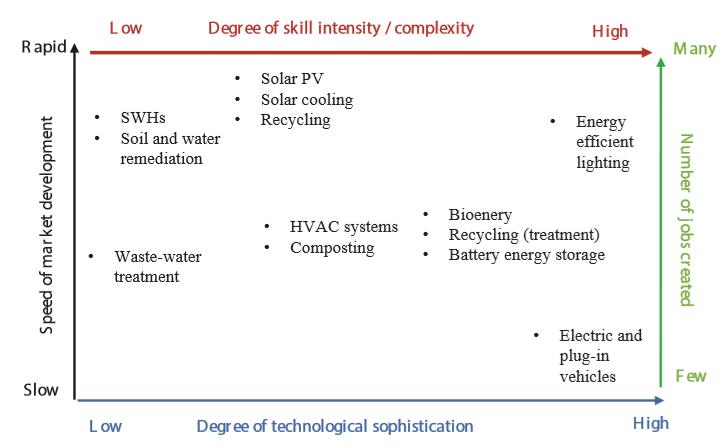
Figure 1: Forecast of the number of green jobs and necessary green skills for developing countries based on the complexity of green technology applied and market growth
Data in Figure 1 shows that green skills are needed for the workforce during the early stages of the greening process, when low-complexity technology is used, including wastewater treatment skills, skills in using solar water heaters, and skills in reducing water and soil pollution. When using more complex green technologies, such as energy storage in batteries, recycling technologies, electric vehicles, and high-efficiency lighting, green skills will need to be more thoroughly trained to adapt the workforce to these green jobs. University training institutions should base their curricula on real-world demands, as outlined above, to design appropriate green skills training programs that meet the needs of textile enterprises.
Integrating Digital and Green Skills into Textile & Garment Training
| Hanoi Industrial Textile Garment University is an application-oriented university that provides human resources for the textile & garment industry and is the only university offering a closed-loop supply chain workforce for the textile sector. The university, as a key training institution providing core personnel for the industry, currently offers 11 undergraduate programs across the supply chain, including Fashion Design, Textile Technology, Garment Technology, Business Administration, Industrial Management, Mechanical Engineering Technology, Electrical and Electronic Engineering Technology, Accounting, Marketing, E-Commerce, and Graphic Design. |
Each year, nearly 1,000 students graduate from Hanoi Industrial Textile Garment University and work at over 200 different enterprises. A survey of 852 students graduating in 2023, conducted 12 months after their graduation, showed that 97.1% had stable employment, with an average monthly income of 9 million VND per person, while the highest income reached 40 million VND/month. Of these, 82.8% of graduates from ĐH-K4 of the university were working in the private or foreign-invested sector, with an average income of over 10 million VND/month, which was 11.1% higher than the class average. Some students in this group earned as much as 35 to 40 million VND/month. Additionally, 89.9% of graduates were working in management and technical positions, and 4.2% started their businesses.
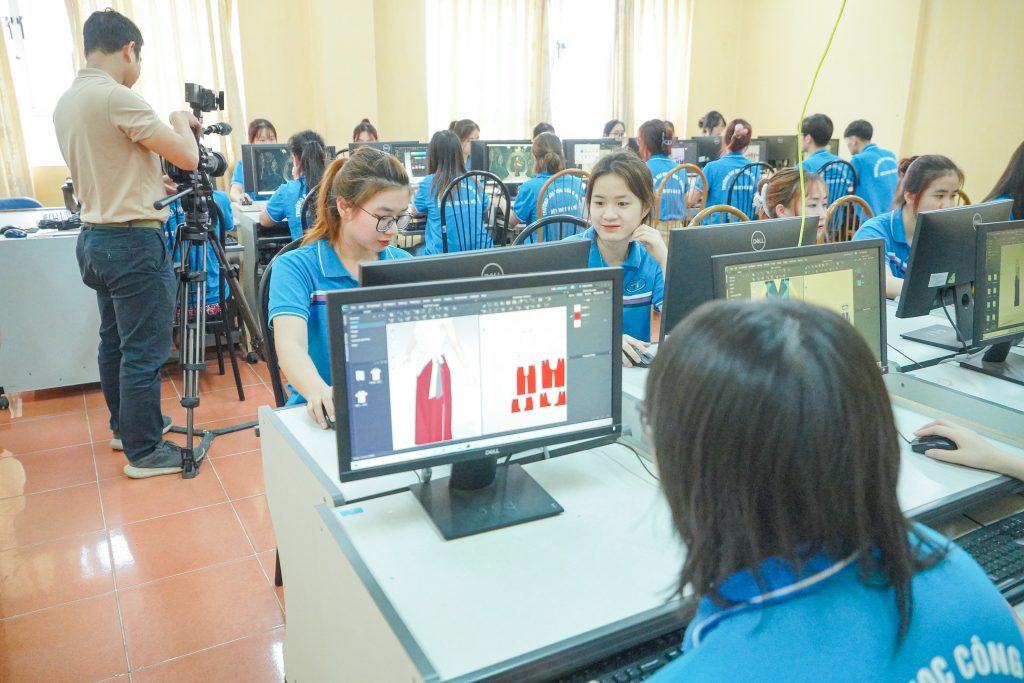
It can be said that graduates from Hanoi Industrial Textile Garment University have made positive contributions to the development of the textile garment industry in recent years. However, to further improve the quality of graduates to meet the digital and green transformation needs of enterprises in the future, HTU will integrate essential digital and green skills into training programs through the following effective solutions:
-
- Integrating 3D design software, sustainable product design, and recycled fashion design into the Fashion Design program.
- Introducing equipment that applies digital technology, energy-saving devices, smart factory models, sustainable environmental processes, and AI applications for production preparation into the Garment Technology and Textile Technology programs.
- Incorporating enterprise resource planning (ERP) software, quality management systems, balanced scorecard management, accounting software systems, and e-commerce business models into the Business Administration, Industrial Management, Accounting, and E-Commerce programs.
- Introducing robotics, mechatronics, and new energy technologies into the Electrical and Electronic Engineering Technology and Mechanical Engineering Technology programs.
- Training faculty: Assigning faculty tasks to conduct research that updates digital and green technologies in the textile sector.
- Investing in training equipment: Updating equipment in line with digital and green technologies, such as automated machines, robots, and energy-saving technology.
- Connecting students with internships: Facilitating internships at advanced domestic and foreign enterprises to expose students to working environments with high levels of automation, virtual-real connectivity, and green production models.
- Organizing scientific research: Direct research activities to evaluate the impact of digital and green technologies on human resource training and propose solutions to develop a workforce capable of operating in the era of digital and green transformation.
